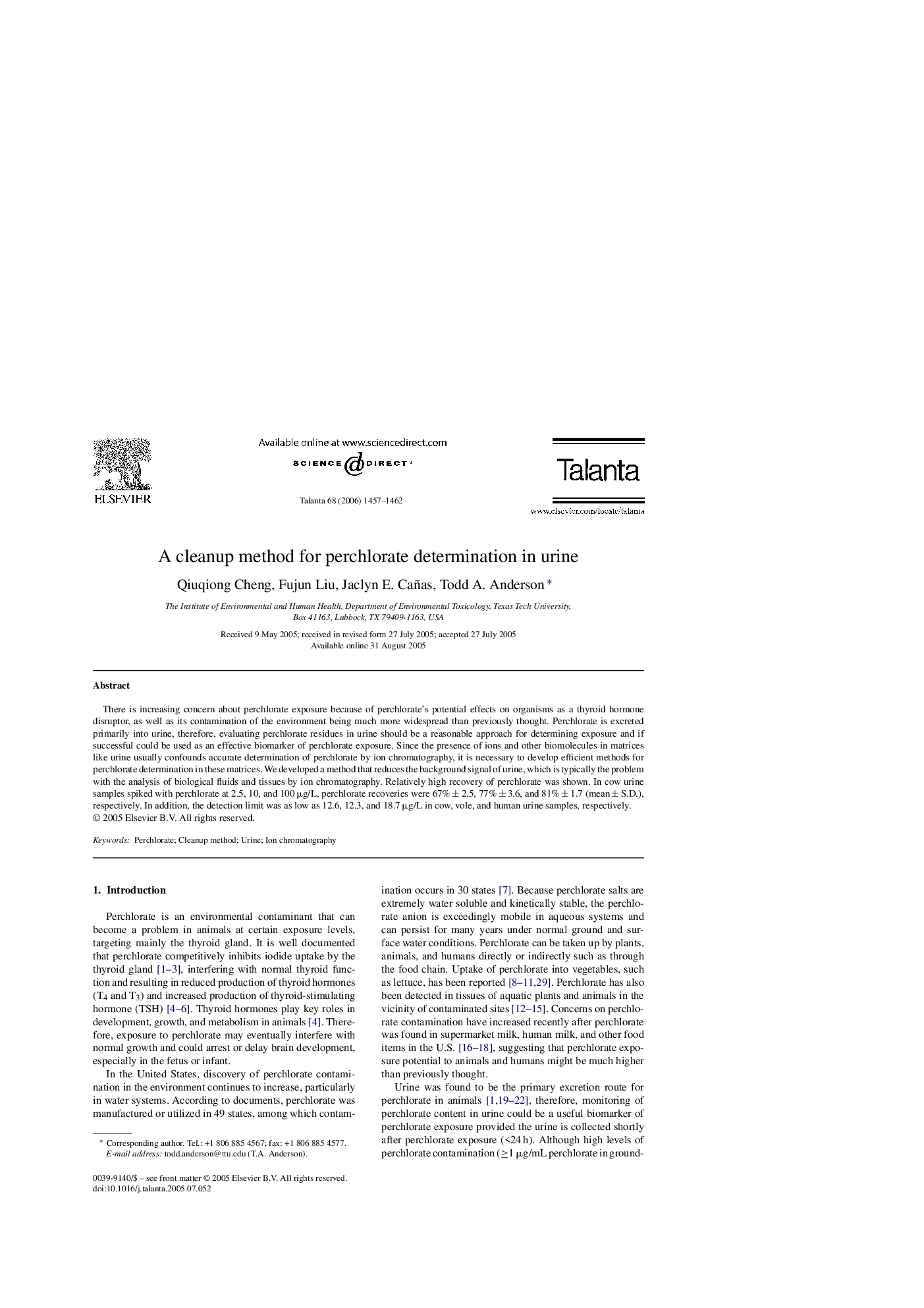| Article ID | Journal | Published Year | Pages | File Type |
|---|---|---|---|---|
| 1246559 | Talanta | 2006 | 6 Pages |
There is increasing concern about perchlorate exposure because of perchlorate's potential effects on organisms as a thyroid hormone disruptor, as well as its contamination of the environment being much more widespread than previously thought. Perchlorate is excreted primarily into urine, therefore, evaluating perchlorate residues in urine should be a reasonable approach for determining exposure and if successful could be used as an effective biomarker of perchlorate exposure. Since the presence of ions and other biomolecules in matrices like urine usually confounds accurate determination of perchlorate by ion chromatography, it is necessary to develop efficient methods for perchlorate determination in these matrices. We developed a method that reduces the background signal of urine, which is typically the problem with the analysis of biological fluids and tissues by ion chromatography. Relatively high recovery of perchlorate was shown. In cow urine samples spiked with perchlorate at 2.5, 10, and 100 μg/L, perchlorate recoveries were 67% ± 2.5, 77% ± 3.6, and 81% ± 1.7 (mean ± S.D.), respectively. In addition, the detection limit was as low as 12.6, 12.3, and 18.7 μg/L in cow, vole, and human urine samples, respectively.
